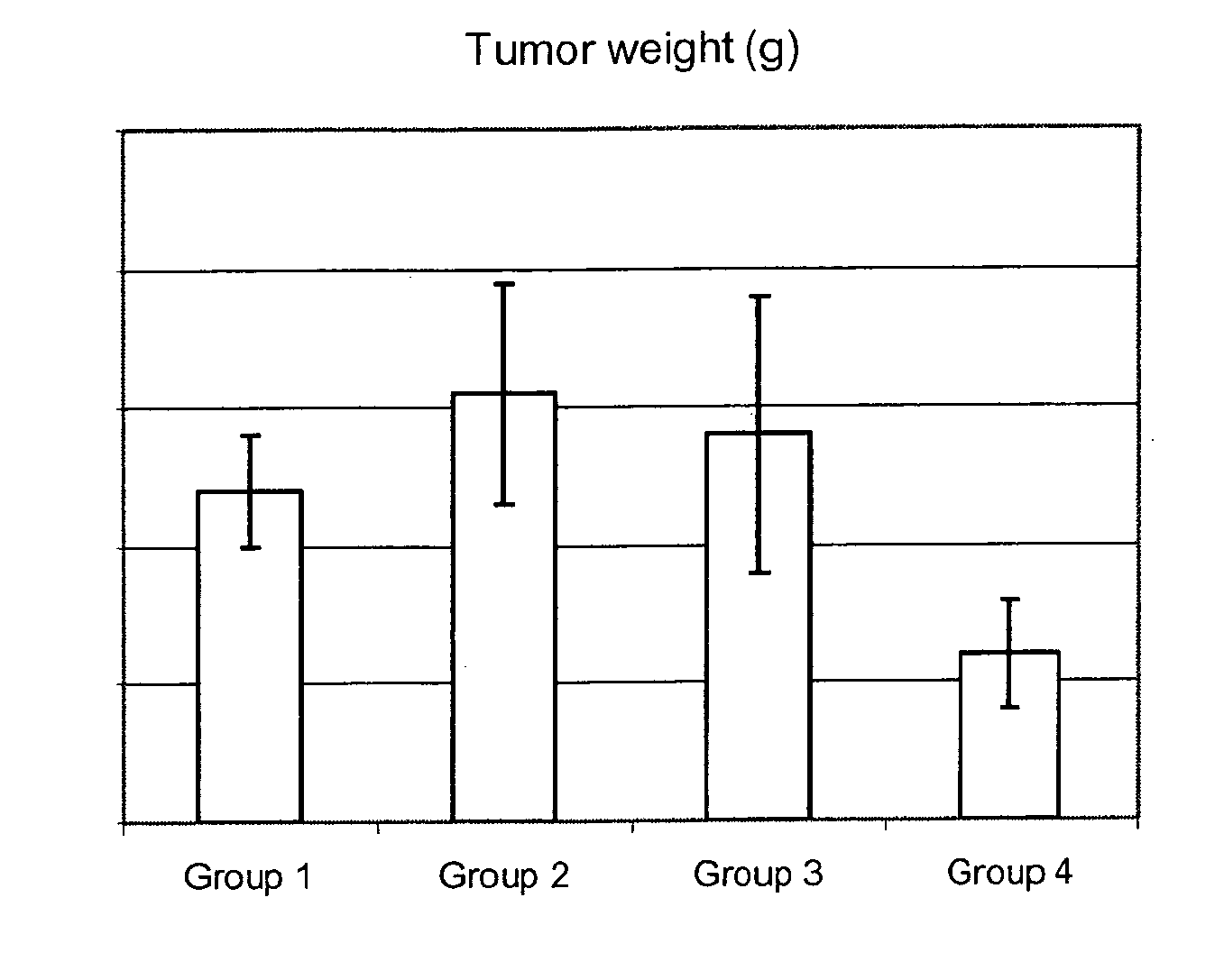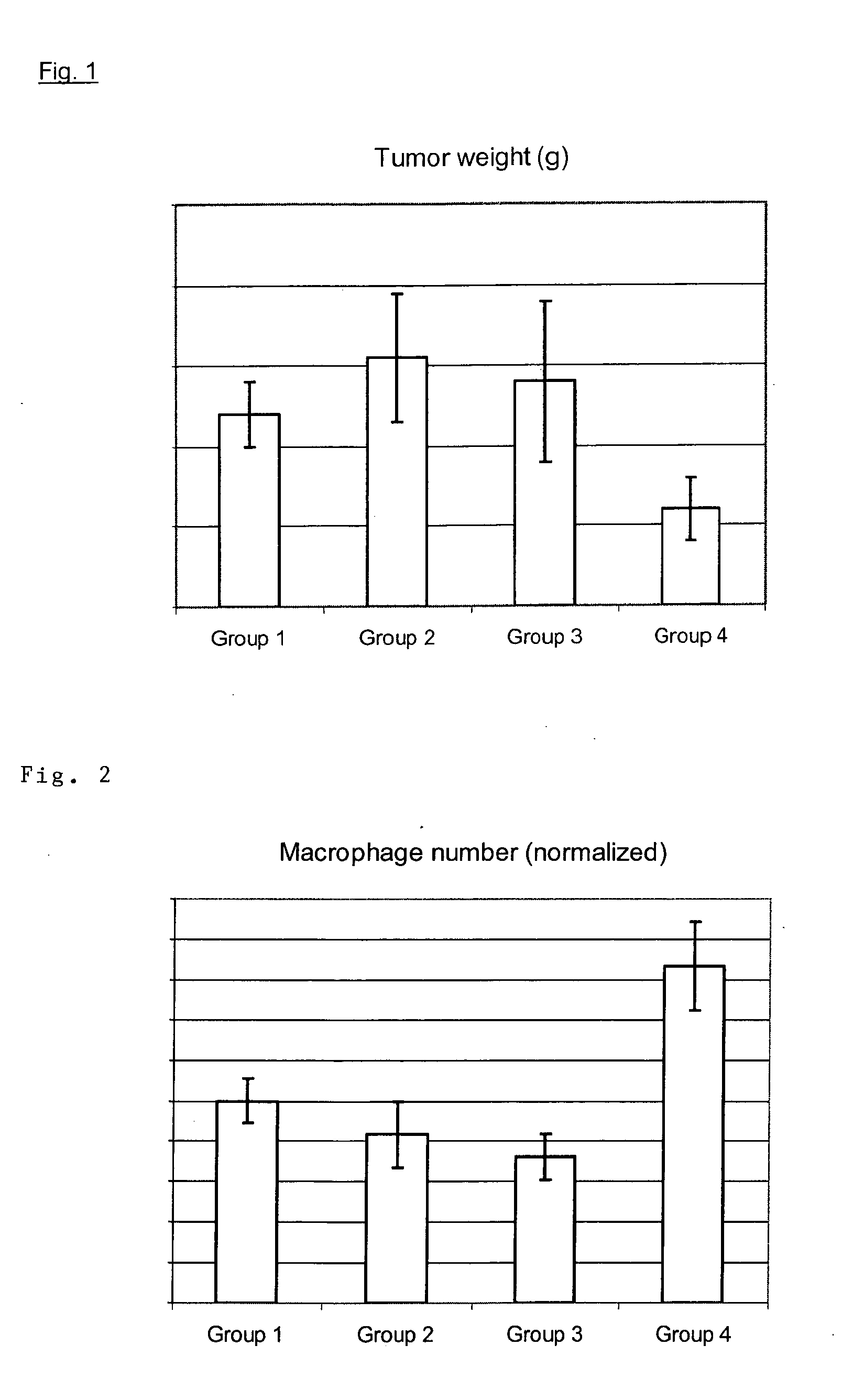Novel multifunctional compounds for pharmaceutical purposes
a multifunctional compound and compound technology, applied in the direction of tripeptide ingredients, sugar derivatives, pharmaceutical non-active ingredients, etc., can solve the problems of severe adverse side effects in patients, the immune system cannot recognize and respond to these structures, etc., and achieve the effect of improving its effectiveness
- Summary
- Abstract
- Description
- Claims
- Application Information
AI Technical Summary
Benefits of technology
Problems solved by technology
Method used
Image
Examples
embodiments
1. Single Binder+Single Effector; Linear Linker
[0083]In one embodiment of the invention, the multifunctional compound of the invention comprises a single binding element (binder) and a single effector which are linked via a linear linker. The binding element is an oligopeptide that has binding affinity to one or more target molecules, target cells or target tissue. Preferably the target molecule is a molecule expressed at the surface of cancer cells.
[0084]The length of the oligopeptide can vary between very few and more than hundred amino acid residues. Preferably, the length of the oligopeptide is between 1 and 75 amino acid residues, more preferably between 5 and 25 amino acid residues. The oligopeptide is typically comprised of at least some of the 20 natural amino acid residues. Alternatively, the oligopeptide is comprised of non-natural amino acid residues or a mixture of natural amino acid residues and non-natural amino acid residues and can also comprise non modified peptide ...
examples
I. Manufacture
Manufacture of Binders
Peptides
[0126]Methods to produce oligopeptides an proteins in vitro are known to the person skilled in the art. Original protocols to provide such oligopeptides have been published by Merrifield in 1963 [R. B. Merrifield, J. Am. Chem. Soc. 85, 2149 (1963); B. D. Larsen et al, J. Am. Chem. Soc. 115,6247 (1993); D. D. Smith et al, J. Peptide Protein Res. 44, 183(1994); M. J. O'Donnell et al., J. Am. Chem. Soc. 118, 6070 (1996).
Synthetic Peptide (Unnatural Amino Acids, Etc), Cyclic Peptides, Peptide Mimetics
[0127]Numerous improvements and extensions to the protocols have been found giving this methods a high degree of flexibility. The improvements include the incorporation of unnatural aminoacids [Ishida, H., & Inoue, Y. (1999) Peptides that contain unnatural amino acids: Toward artificial proteins. Reviews on Heteroatom Chemistry, 19, 79-142; O'Donnell, M. J., Lugar, C. W., Pottorf, R. S., Zhou, C., Scott, W. L., & Cwi, C. L. (1997) Solid-phase synt...
PUM
| Property | Measurement | Unit |
|---|---|---|
| molecular weight | aaaaa | aaaaa |
| length | aaaaa | aaaaa |
| molecular structure | aaaaa | aaaaa |
Abstract
Description
Claims
Application Information
 Login to View More
Login to View More - R&D
- Intellectual Property
- Life Sciences
- Materials
- Tech Scout
- Unparalleled Data Quality
- Higher Quality Content
- 60% Fewer Hallucinations
Browse by: Latest US Patents, China's latest patents, Technical Efficacy Thesaurus, Application Domain, Technology Topic, Popular Technical Reports.
© 2025 PatSnap. All rights reserved.Legal|Privacy policy|Modern Slavery Act Transparency Statement|Sitemap|About US| Contact US: help@patsnap.com


